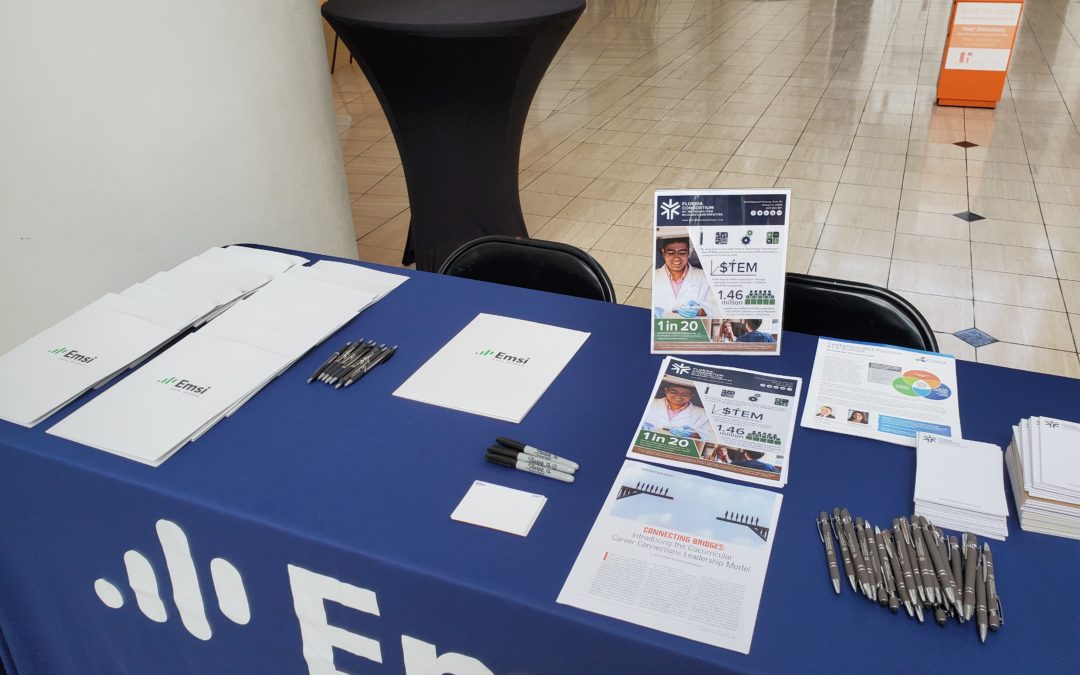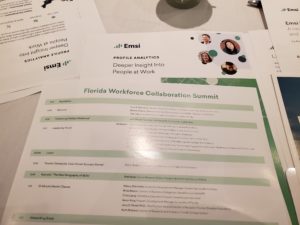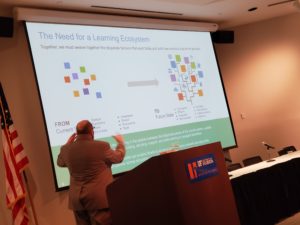Each April scouts, coaches, team owners in the National Football League gather for the draft. Over the course of three days their ability to evaluate talent is tested as they vie to fill their rosters. Prior to the draft, NFL teams invest millions of dollars and countless hours evaluating potential candidates for skill, health, strength, and judgement. The NFL spares no expense to ensure they have the very best talent. Do they get it right? What is the return on their investments? According to a 2017 Pro Football Reference study, of the NFL drafts from 1994-2014, NFL teams end up selecting the wrong pick 68% of the time. Said another way, even the NFL has a hard time finding talent.
So imagine you run a business in Orlando, Tampa, or Miami. Each year you have openings that are tough to fill. Each year you receive hundreds of applications. How do you choose the best candidates? How do you determine the right fit for short and longer term needs?
Over 100 leaders across the Sunshine State asked that very question during the Florida Workforce Collaboration Summit which was co-sponsored by EMSI, the Florida Consortium, and the University of Florida. The event was devoted to examining ways higher education, employers, and political leaders can use workforce data to make better decisions and connect talent to opportunity.
The day began with “Optimizing Florida’s Workforce” a succinct presentation from Josh Wright EVP at EMSI followed by a leadership forum on workforce analytics led by Tony Carvajal, President of the ABEL Trust. Adriane Grant from CareerSource Florida, Tara Blythe from InfoTec, Erik Sadler from the University of Florida, Nicole Washington of Washington Education Strategies, and Ruthann Atchley from the University of South Florida participated in the panel discussion. This discussion coalesced around four themes:
- Higher education and employers need to spend more time understanding what each other’s needs are before making decisions on ways to address talent needs
- The post-graduation experience needs some work, however with some help, colleges and universities can better prepare learners for the road ahead
- Employers need to do a better job evaluating talent and onboarding if they hope to retain more talent
- Collectively we must work together to develop “resilient and adaptable humans.” If successful, college grads i.e. high skilled talent will be able to showcase their skills, employers will have the talent they need, and our communities will thrive.
Later in the day, Rob Kadal a research fellow at the Strada Institute for the Future of Work led a discussion on the “New Geography of Skills.” Strada contends that talent alone is not a sustainable way to fill open positions across the nation. Now more than ever and certainly in the future we need a learning ecosystem that can identify and forecast the talent needs of a local economy. This approach addresses specific talent gaps, ways to refresh skills, and more accurately addresses demand.
The event ended with a series of 10-minute master class style talks on a range of workforce related topics from thought leaders from the Greater Gainesville Chamber, the Florida Chamber Foundation, and the Florida College System among others.
The Florida Workforce Collaboration Summit is the first in a series of talent development events and the Florida economy hosted by the Florida Consortium. We believe we can do better than the NFL in terms of talent development and acquisition. As such, the Florida Consortium will partner and co host similar gatherings throughout the year to do just that.
Click here for presentations and recording from this event
Related Resources
Doubling Jobs Opportunities for Biology and Psychology Majors
Human + Skills For the Future of Work: Robot Ready
Talent Attraction Scorecard
The 10 skills you need to thrive in the Fourth Industrial Revolution
Strada Institute for the Future of Work





